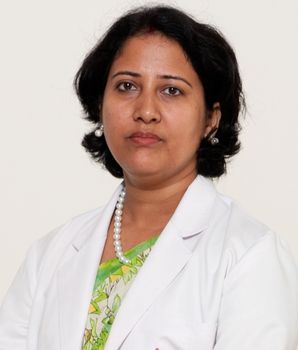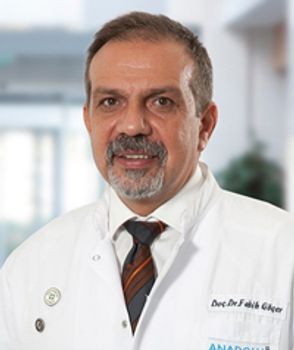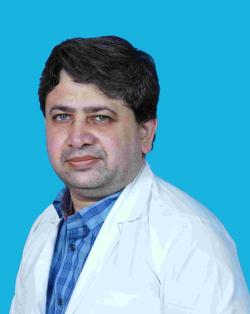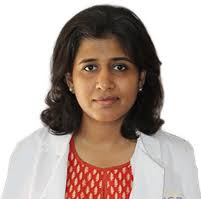Angelina Jolie: 5 Interesting Facts About Breast & Ovarian Cancer

Filmmaker Angelina Jolie revealed in a March 2015 New York Times op-ed that she had her ovaries removed after tests discovered potential early markers of ovarian cancer, the disease her mother died from in 2007. A carrier of the breast- and ovarian-cancer gene BRCA1, Jolie had a double mastectomy in 2013 to dramatically reduce her risk of developing breast cancer.
“It is not easy to make these decisions,” Jolie wrote about her most recent surgery. “But it is possible to take control and tackle head-on any health issue. You can seek advice, learn about the options and make choices that are right for you. Knowledge is power.”
It’s important to understand just why the choice to have the mastectomy and, now, the oophorectomy was right for Jolie—and why it may or may not be right for others.
1. Most cases of breast cancer are completely random—not due to BRCA genetic mutations.
BRCA1 and BRCA2 genes are types of tumor suppressors. When they function normally, they help prevent uncontrolled cell growth that can lead to malignant tumors. When the BRCA genes have faulty mutations, it can lead to the development of hereditary breast and ovarian cancer, according to HealthDay News.
Genetic mutations make up just 5 to 8 percent of all cases of breast cancer, Nancy Snyderman, MD, NBC’s chief medical editor, told Today. The overwhelming majority of people with breast cancer do not have BRCA mutations. “This was not a random test [for Jolie],” Snyderman said. The actress chose to be tested because her mother was diagnosed with ovarian cancer at a young age.
2. Most women don’t need—and shouldn’t get—genetic testing
Wondering whether you should be tested for mutated BRCA genes? Only women who have an increased risk due to certain patterns of family cancer benefit from testing.
The University of Texas MD Anderson Cancer Center says that it’s important to focus on the right relatives before jumping to conclusions about your family’s cancer history. It recommends the following criteria:
• Look at the health history of first-degree relatives (parents, siblings, children) and second-degree relatives (grandparents, aunts, uncles, nieces, nephews).
• You may want to consider getting tested for BRCA genes if one or more (on the same side of the family) were diagnosed with the same kind of cancer (two breast cancers, two ovarian cancers, for example), a BRCA1 or BRCA2 mutation, breast or ovarian cancer before age 50, both breast and ovarian cancer, or male breast cancer.
• People who are of Ashkenazi (Eastern European) Jewish descent and have one or more relatives who fit the the diagnoses above may have high risk of having a BRCA mutation.
The BRCA mutations are detected with a blood test through a lab that specializes in the screening and results can take a few weeks.
3. Not everyone with faulty BRCA genes will develop cancer.
Defective BRCA genes do raise the risk of breast and ovarian cancer dramatically, as Angelina Jolie’s doctor advised. According to HealthDay News, about 60 percent of women with these genetic mutations will be diagnosed with breast cancer; a woman with a BRCA1 or BRCA2 mutation is about five times more likely to develop breast cancer than a woman without it.
That’s why some experts believe that the decision to prophylactically remove both breasts, as Jolie did, as well as your ovaries, is a smart one for someone who tests positive for these mutations. Dr. Stephanie Bernik, chief of surgical oncology at Lenox Hill Hospital in New York City, told HealthDay News that a double mastectomy “the best option for someone who is BRCA-positive.”
But not everyone who tests positive for BRCA mutations has the same exact elevated risk of breast and ovarian cancer. As it explains on the Dr. Susan Love Research Foundation site, researchers used to believe that anyone with the BRCA1 mutation had an 80 percent risk of developing breast cancer in their lifetime, “but this was based on studies of families with a lot of breast and ovarian cancer. Additional studies done on women who had the genetic mutation, but had fewer relatives who had had breast cancer found that their risk was commensurately lower—more like a 37 to 60 percent chance.”
Risks can vary widely, and some patients may be more comfortable with watching and waiting than having surgery. Experts recommend anyone considering genetic testing for breast or ovarian cancer should work with a genetic counselor who can help weigh the complex upsides and downsides of testing and treatments.
4. The highest risk family member should get tested first.
According to the Atlantic Health System, if cancers run in your family, first test the family member with the highest risk of having a mutation. That might be someone who was already diagnosed with breast or ovarian cancer at a young age, usually before 40. The site’s editors explain: “Even if there is a mutation in the family, a woman with late-onset breast cancer (say, after age 65) may still develop that cancer by chance, rather than because of inheriting a mutation. Testing her might miss catching the mutation in the family.”
If the first person tested in a family hasn’t had cancer yet, the results may be less reliable. Negative results might still mean that others in the family carry the mutation.
There are also three different kinds of BRCA tests, depending on your risk factors for having the mutation. Read more about which may be right for you.
5. The test is expensive, but insurance may cover it.
For insurers to cover the test, which can cost from a few hundred to a few thousand dollars, you need to be at high risk for the mutation, according to Ob-Gyn Lauren Streicher, MD, author of The Essential Guide to Hysterectomy in EverydayHealth. If you are considering the tests, check to make sure you’re covered.
According to the Atlantic Health System, most insurance policies will cover testing if a BRCA mutation has already been detected in your family, or you have a personal or family history that suggest BRCA-related cancers.
Source: http://www.rd.com/health/conditions/beyond-angelina-jolie-5-surprising-facts-you-didnt-know-about-the-breast-cancer-gene/





